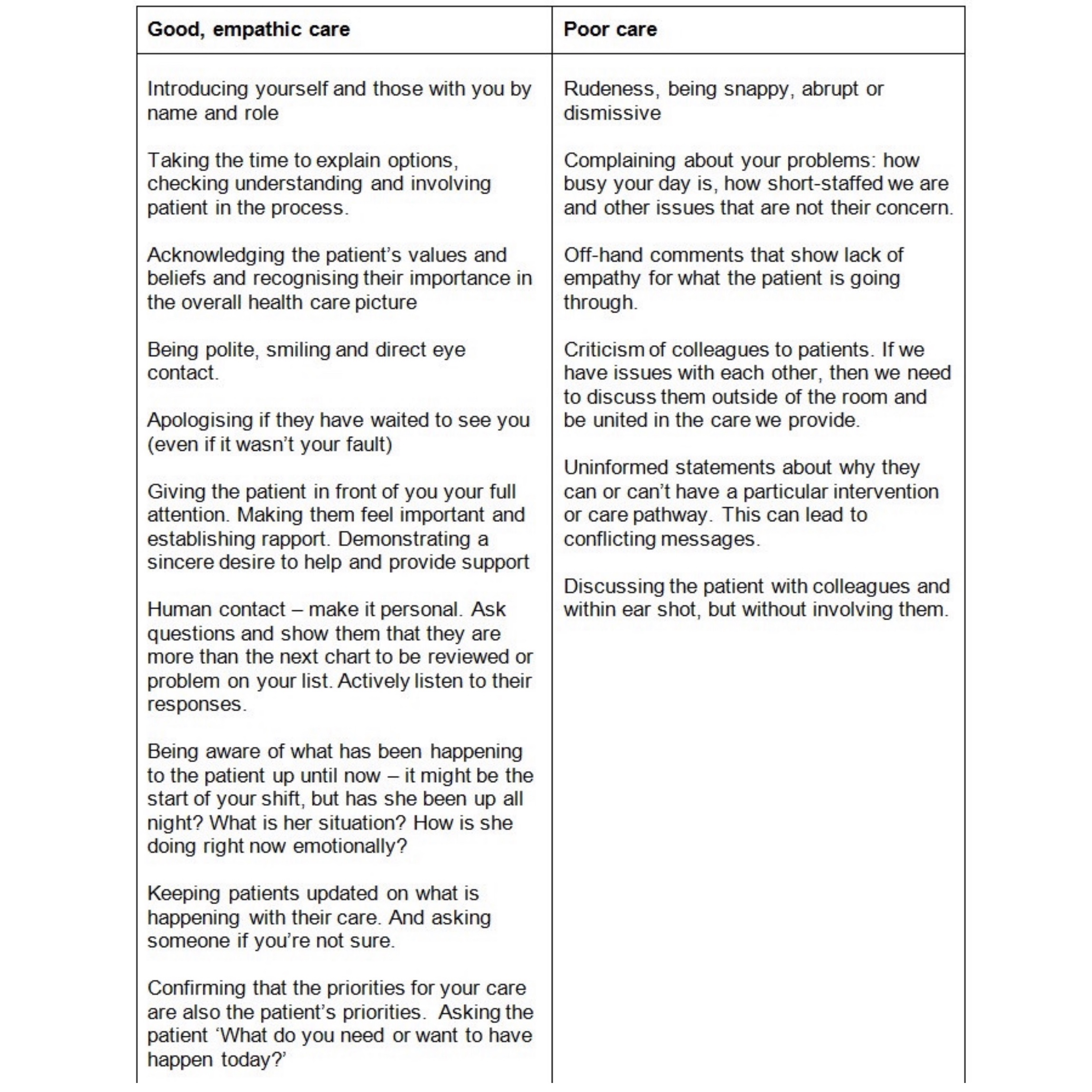This previous post gives an overview of the broad approach to complaints, adverse outcomes and litigation, in particular how to deal with the complaint when it first hits your desk and the decision process about whether it can be resolved via telephone call, written response or if clinical or open disclosure is necessary. Here I am going to go into some detail about the written response.
It's worth considering the reasons why people complain, or what the drivers are for complaints and litigation in general. These might include:
- To find out what happened and why. It can be a sign that they haven't had their concerns addressed elsewhere.
- Acknowledgement, acceptance of responsibility and an apology
- To enforce accountability
- To correct deficient standards of care
- Financial compensation – for accrued and future costs
Before writing the letter, you need to understand exactly what happened by accessing patient records and speaking with staff involved if possible. Is there a deficiency in care or has the complaint highlighted an area where change in practice could avoid future adverse events or dissatisfaction? Is the complaint reasonable or does the complainant have unrealistic expectations? It’s rare that there is nothing to learn from a patient who has taken the time to write a complaint and the approach to understanding the situation must be with an open mind.
Once you have all the information and have decided a plan to address the individual’s concerns, you can write the response.
Communication style
When writing, it’s important to pitch the tone of the letter appropriately and bring to our writing elements of communication skills we use in face-to-face care. The style needs to be professional, empathic and convey genuine, heartfelt concern about the issues raised, and a desire to address any deficiencies that have been identified. It’s important to avoid excessively technical language.
When constructing your response, it can be helpful to constantly imagine yourself in the patient’s shoes as they read your letter, having experienced what they have, their level of knowledge about medical matters and their lived experience of the event. As you write, think about how the words you choose make them feel, add to their understanding of the situation and help them psychologically heal.
Outline
The following structure may be used when writing letters:
- Acknowledgment of the problem, impact on the individual and distress caused and apology.
- Summary of events
- Explanation & clarification of misunderstandings or misconceptions, and acknowledgment of deficient care if appropriate
- Actions that will occur as a result of the complaint and investigation
- Close with final apology and details of who to contact in the case of further questions
I will discuss each of these parts in some detail. There are a wide range of skills in written and spoken word and not all doctors have English as their first language, so I’ll include some example sentences to convey an appropriate style.
Acknowledgment, impact, apology
In the opening paragraph, you will acknowledge receipt of the complaint and thank the patient for taking the time to submit it. An apology for the experience is included. Note that this is not the same as apologising for wrongdoing or accepting fault. Examples might include:
‘Thank you for your feedback regarding the care of your daughter Jane. I’m sorry to hear that some of the interactions with our team didn’t meet your expectations and were upsetting for you. Please understand that we take complaints very seriously and investigate thoroughly.’
‘Thank you for taking the time to write to me. I was sorry to hear that you were unhappy with the consultation when you came to clinic last month.’
‘Thank you for the opportunity to respond to your concerns about….’
‘…I’m sorry to hear that your recent experience didn’t meet our usual standards of care.’
‘I’m sorry that you found the staff involved to be unsupportive. As a first-time mother who has been through a complex birth, you would need their care and attention more than ever.’
There’s no need to go into specific explanations or justifications at this stage. The opening paragraph of the letter must be about demonstrating that you have been open to genuinely hear and understand the patient’s concerns.
Summary of events
In this section, you will briefly summarise what has concerned the patient and the crux of the complaint. If the complaint is extensive, you don’t need to repeat the whole timeline here. The reason for summarising into your own words, is to show your open enquiry has resulted in true understanding of what is important to them. They will feel heard.
‘I understand that after your initial surgery, you became unwell later that evening and needed to return to theatre for another operation. This unexpected complication must have been a distressing experience for you.’
‘I understand that when you saw Dr. Jones in the clinic, the information that you received made you anxious and scared for your baby. You believe that a different tone in her voice and choice of words may have made the consultation less stressful.’
Explanation, clarification, acknowledgment
This constitutes the main of the letter and in these paragraphs you will address each of the patient’s concerns, explain any misunderstandings, clarify why events occurred as they did and acknowledge any deficiencies you’ve identified in your case review. Where care has been appropriate, indicate so by stating that it was consistent with expected medical practice.
It's important to be honest. If in your assessment a different course of events might have changed the outcome for the patient, it's right to acknowledge that and apologise that it didn't occur. There is a fine balance between concerns about admitting medico-legal liability and being honest in your explanation. Often we don't know for sure that outcomes would have improved and we need to be clear about that too. The more significant the harm to the patient, the greater the imperative to involve local patient safety and legal teams before sending correspondence.
Communication complaints are common. It’s important to hear your staff member’s version of events. Sometimes they will agree that on that occasion their professionalism slipped and they may be able to explain why (e.g. long working hours, heavy patient load or recent professional or personal distressing event). It is appropriate to tell that patient that you have spoken with the member of staff concerned and that they express regret about what happened. If the staff member outright denies any communication issue, they still need to reflect on the fact that whatever took place, it resulted in an upset patient. Sometimes differences are unresolvable, however we can still express regret at their unhappy experience.
If the patient has a long timeline of events that need explanation – consider whether writing a letter is actually the best approach. When situations are very complex, it can be difficult to convey all the nuances of decision-making and answer secondary questions which will inevitably arise. Sometimes, however, patients specifically request a written reply or decline a face-to-face meeting.
‘As explained by Dr. Jones when he saw you in clinic, persistent attempts at removing small areas of tissue carries the risk of causing injury to the uterus, especially if there is infection present. The operation that was carried out during your admission was done correctly. As documented on the consent form that you signed, there is always the small risk of persistent tissue remaining and scarring inside.’
‘I fully appreciate that the demeanor and individual approach of a doctor can affect how you feel after a consultation. Dr. Jones understands that you were upset after seeing him and he apologises for the distress caused. He also acknowledges that the situation escalated when you insisted that other doctors suggested a different approach. He regrets raising his voice and the confrontation that followed.’
‘We have spoken about alternative ways that the information might be framed to avoid undue distress.’
‘Dr Jones was upset to hear that you were distressed by the consultation on that day, as he felt the discussion went well. I was surprised to hear about your experience, as I have worked with Dr. Jones for a long time and know him to have very good communication skills. He has nevertheless reflected on how you felt on that occasion.’
‘I’m sorry that you went through all of this; it must have been extremely upsetting to deal with, both physically and psychologically.’
‘I have spoken at length to the doctors involved, they have reflected on it and understand where the care we delivered might have been improved. I would have expected a more senior doctor to be involved earlier. I don’t know for certain that things would have been different, but I believe your situation was complex and it’s always helpful to have someone experienced directly involved in that situation.’
Actions
In these section, summarise the actions that have arisen from the complaint including a time by which you will complete them if they aren’t already done. Many complaint responses do not have outstanding actions. If relevant, these might include:
- Changes in department policy or guidelines to avoid similar issues with a future patient
- Escalation of the complaint to another internal body (e.g. Patient Safety committee)
- Communications to remind your team about established policies that were not followed. This could include an anonymised case presentation to emphasise the learning points.
- Referrals to appropriate specialist or support services
- Communication to GP
Close with final apology
In closing a final apology and arrangement for follow up and how to get back in contact if there are any further questions.
‘Once again I apologise for your prolonged stay and recovery. I hope you are well on the way to feeling better now. As I mentioned, I can organise a clinic appointment to discuss any further questions you have about this, or future pregnancy planning. If you would like an appointment to be arranged, please telephone Jane, my Support Officer on 44331279.’
‘I’m sorry but we are unable to make payment for a second opinion or further surgery carried out in the private sector. A second opinion is always available with a different team at our hospital. Please let me know and I will arrange this for you.’
‘Thank you for the opportunity to address your concerns. If there is anything else I can do, please do not hesitate to let me know’
Summary
Dealing with patient complaints is complex and can be stressful, but when done well is likely to restore the patient’s faith in the health care provider and organisation. People need to have their concerns heard and to be dealt with in an open, empathic way. Complaints are an opportunity to both maintain our community's confidence and improve the care we deliver.























